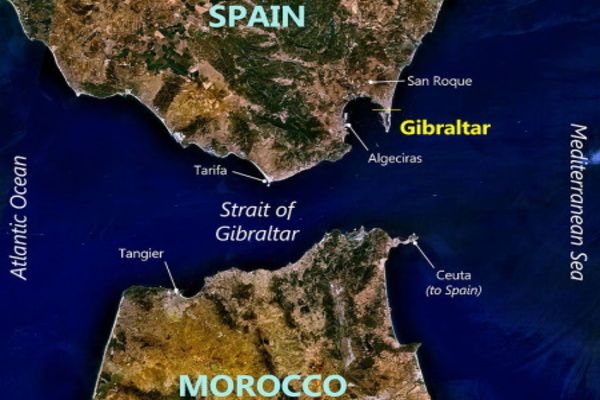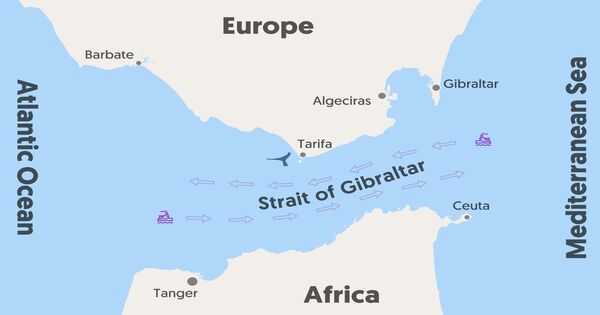The oceans are constantly changing, most of the time over millions of years. Researchers from Portugal’s Universidade de Lisboa and Germany’s Johannes Gutenberg University Mainz (JGU) have utilized computer simulations to show that a subduction zone originating in the Western Mediterranean will migrate into the Atlantic under the Strait of Gibraltar.
According to their model, this will form a new Atlantic subduction zone 50 million years from now, which would subsequently travel into the Earth’s mantle. The new geodynamic model explains the evolution and likely growth of the Gibraltar subduction zone, which will help to rebuild the Atlantic Ocean floor.
The findings are the result of many years of collaboration between the partners in Lisbon and Mainz and have been published recently in Geology.
We do not share this view. Our computer simulations allow us to accurately reconstruct the physical development of the Gibraltar arc and assess its future development.
Professor Boris Kaus
Oceans have individual lifetimes
Oceans form and grow, but eventually shrink and close — a process known as the Wilson cycle. One of the cycle’s cornerstones is the commencement of subduction, which occurs when oceanic lithosphere returns to the Earth’s mantle to be recycled.
“The Atlantic Ocean is unique because, unlike the Pacific, there are almost no subduction zones,” stated JGU Professor Boris Kaus. The two completely developed subduction zones in the Atlantic with volcanic island arcs are the Lesser Antilles arc in the Caribbean and the Scotia arc between Argentina’s southern tip and the Antarctic, which originated during the Cretaceous period.
“The Gibraltar arc that is now about to invade the Atlantic is the third,” explained Kaus, head of the Geodynamics and Geophysics group at JGU. The Atlantic is thus a unique laboratory that enables the analysis of subduction initiation.
The Gibraltar arc formed as a result of subduction zones that formed in the Western Mediterranean beginning around 30 million years ago during the Oligocene era. The majority of the arc is now submerged in the Alborán Sea, the westernmost section of the Mediterranean Sea, which extends into the Atlantic. Its spread to the West has halted over the last 5 million years, prompting some academics to speculate that it may have become completely inactive. “We do not share this view,” said Professor Boris Kaus and Dr. Nicolas Riel. “Our computer simulations allow us to accurately reconstruct the physical development of the Gibraltar arc and assess its future development.” The research team performed its computations using the MOGON II supercomputer at JGU.

Migration into the Atlantic will recommence after a period of quiescence
The simulations start at a period 30 million years ago and show the arc of the subduction zone gradually moving from the French/Spanish Mediterranean region towards the south. Some 17 million years ago, the center of the arc reached North Africa. Islands, such as the Kabylies, wandered with this southward movement and became attached to the North African mainland. “Our model also helps explain certain geological observations,” said Professor Boris Kaus.
Roughly 10 million years ago, the so-called slab, which is the part of the lower plate that already descends into the mantle, began to push toward the Atlantic. The Atlantic subduction zone of the Gibraltar arc is currently on a line that approximately corresponds with that of the border between Spain and Portugal.
Geophysicists in Mainz and Lisbon predict that the arc’s rate of growth will slow in the future, eventually coming to a halt in approximately 20 million years. Following then, the rate of migration will increase, and over the next 30 million years, the subduction zone will spread into the Atlantic in the shape of a semicircle, forming a new Atlantic subduction system.
The model depicts the movement of a subduction zone from a closed ocean (in this case, the Mediterranean) through a short oceanic corridor into a new opening ocean (the Atlantic). “Our simulations have shown for the first time that this form of direct migration can occur,” added Professor João Duarte of Universidade de Lisboa, lead author of the published article.
















